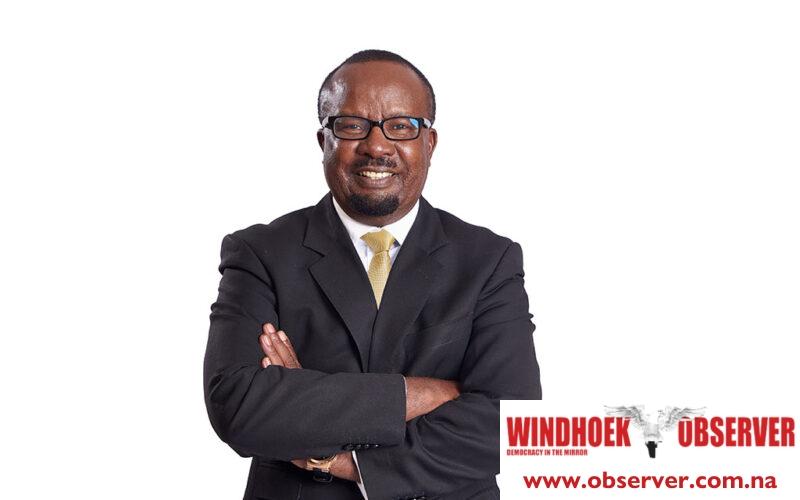NamPower, managing director, Kahenge Haulofu talks to Observer Money about the power supply situation this winter. He explains that the company spends up to N$4 billion per year on imports. He also explains that NamPower applied for a tariff increase 14,59% but the Electricity Control Board (ECB) only approved a bulk tariff increase to 8%.
Observer Money (OM): Winter is fast approaching and Zambia has already indicated that it will reduce exports. Is Namibia affected by possible reduced imports from neighboring countries?
Kahenge Haulofu (KH): Yes, currently NamPower is currently affected with an export reduction totaling 60MW from the Zambian power utility ZESCO. NamPower has contracted 180MW through two distinct bilateral Power Purchase Agreements (PPAs), which capacity has collectively reduced to 120MW. NamPower is actively taking the necessary measures to mitigate the effects of the reduction with alternative supply sources from within the Southern African Power Pool (SAPP) and any foreseeable further reductions, if it may occur.
Although weather/climate changes may affect some of the hydrology system and more specifically hydropower stations in the SADC region, at the moment, the Kunene catchment basin has provided good inflows and as a result our Ruacana Hydropower Station is generating and contributing towards our energy security. So much so, that we have been able to export daily into SAPP for the hours when we had surplus power, in-so doing providing power to our regional SAPP partners when they require power.
OM: How much money does NamPower spend on power imports per year?
KH: This varies and depends on the contribution of local generators such as the Ruacana Hydropower Station to displace imports. However, in a supply scenario where up to 60% of our energy supply requirements are imported, it can accumulate in excess of N$4 billion.
OM: What is the total local generation that NamPower expects to produce compared to imports this year?
KH: This current financial year ends on 30 June 2024. With our Ruacana Hydropower Station contributing extremely well to our supply portfolio, we forecast a split just exceeding 40% of local generation which includes all other renewable energy offtakes compared to imports. Should the river flow hold steadily during the months of May and June, if may be slightly higher, up to 43% to 45%.
OM: What are some of the generation projects that NamPower is developing at the moment, what is their capacity and how much will it cost to develop them?
KH: NamPower continues to implement several generation projects, to achieve its goal of renewable and local/domestic generation. The current suit of projects that are in the pipeline to enhance the local supply as per the ministerial determination are: the 20MW Khan solar PV Power Project that was procured through a power purchase agreement and requires and investment of approximately N$300 million.
The 44MW Diaz Wind Power Project was procured through a power purchase agreement and requires and investment of approximately N$1,5 billion.
The 50MW CERIM Wind Power Project was procured through a power purchase agreement and requires and investment of approximately N$1,7 billion.
The 100 MW Rosh Pinah Solar PV Power Project is a NamPower funded project and requires approximately N$1,6 billion to develop.
The 54MW Anixas Heavy Fuel Oil (HFO) Power Station is a NamPower funded project and requires approximately N$1,3 billion to develop.
The 44MW Otjikoto Biomass Power Station is a NamPower funded project and requires approximately N$2,1 billion to develop. These generation projects will greatly enhance our local capacity and mitigate the magnitude and effects of power supply uncertainty.
OM: NamPower has asked for a 14,59% tariff increase from the ECB, is this enough for NamPower to stay sustainable?
KH: Namibia has adopted a cost reflective electricity tariff. In the tariff application process, many assumptions are made with regards to supply scenarios, associated supply costs, exchange rates and an energy demand forecast. The tariff requested, in alignment with tariff application submitted to the Electricity Control Board (ECB), is based on our revenue requirement for the next financial year commencing 1 July 2024 to 30 June 2025. It is also worth noting that NamPower’s operating expenses included in the tariff application are less than those approved for the current year, resulting in a decrease in the overall tariff application, as well as the decision to phase in the new Anixas II Power Station over a three-year period to avoid a more substation tariff increase.
As a result of a combination of factors stated, NamPower applied for a tariff increase 14,59%. The ECB following its internal review process has subsequently adjusted the revenue requirement downward and has only approved a bulk tariff increase to 8%.
OM: When does NamPower plan to officially open the Anixas II Power Station?
KH: Anixas II Power Station is scheduled for takeover in the third quarter of 2024.




